JAJSCJ4A September 2016 – October 2016 TPS254900-Q1
PRODUCTION DATA.
- 1 特長
- 2 アプリケーション
- 3 概要
- 4 改訂履歴
- 5 Pin Configuration and Functions
- 6 Specifications
- 7 Parameter Measurement Information
-
8 Detailed Description
- 8.1 Overview
- 8.2 Functional Block Diagram
- 8.3 Feature Description
- 8.4 Device Functional Modes
- 9 Application and Implementation
- 10Power Supply Recommendations
- 11Layout
- 12デバイスおよびドキュメントのサポート
- 13メカニカル、パッケージ、および注文情報
6 Specifications
6.1 Absolute Maximum Ratings
Voltages are with respect to GND unless otherwise noted(1)| MIN | MAX | UNIT | |||
|---|---|---|---|---|---|
| Voltage range | CS, CTL1, CTL2, EN, FAULT, ILIM_HI, ILIM_LO, IN, IMON, OVP_SEL, STATUS | –0.3 | 7 | V | |
| DM_OUT, DP_OUT | –0.3 | 5.7 | |||
| BIAS, DM_IN, DP_IN, OUT | –0.3 | 18 | |||
| Continuous current | DM_IN to DM_OUT or DP_IN to DP_OUT | –100 | 100 | mA | |
| OUT | Internally limited | ||||
| ISRC | Continuous output source current | ILIM_HI, ILIM_LO, IMON | Internally limited | A | |
| ISNK | Continuous output sink current | FAULT, STATUS | 25 | mA | |
| CS | Internally limited | A | |||
| TJ | Operating junction temperature | –40 | Internally limited | °C | |
| Tstg | Storage temperature | –65 | 150 | °C | |
(1) Stresses beyond those listed under Absolute Maximum Ratings may cause permanent damage to the device. These are stress ratings only, which do not imply functional operation of the device at these or any other conditions beyond those indicated under Recommended Operating Conditions. Exposure to absolute-maximum-rated conditions for extended periods may affect device reliability.
6.2 ESD Ratings
| VALUE | UNIT | ||||
|---|---|---|---|---|---|
| V(ESD) | Electrostatic discharge | Human-body model (HBM), per AEC Q100-002(1) | ±2 000(2) | V | |
| Charged-device model (CDM), per AEC Q100-011 | ±750(3) | ||||
| IEC 61000-4-2 contact discharge, DP_IN and DM_IN(4) | ±8 000 | ||||
| IEC 61000-4-2 air discharge, DP_IN and DM_IN(4) | ±15 000 | ||||
(1) AEC Q100-002 indicates that HBM stressing shall be in accordance with the ANSI/ESDA/JEDEC JS-001 specification.
(2) The passing level per AEC-Q100 Classification H2.
(3) The passing level per AEC-Q100 Classification C5
(4) Surges per IEC 61000-4-2, level 4, 1999 applied from DP_IN and DM_IN to output ground of the TPS254900Q1EVM-817 (SLUUBI0) evaluation module.
6.3 Recommended Operating Conditions
Voltages are with respect to GND unless otherwise noted.| MIN | NOM | MAX | UNIT | |||
|---|---|---|---|---|---|---|
| V(IN) | Supply voltage | IN | 4.5 | 6.5 | V | |
| Input voltage | CTL1, CTL2, EN, OVP_SEL | 0 | 6.5 | V | ||
| DM_IN, DM_OUT, DP_IN, DP_OUT | 0 | 3.6 | V | |||
| I(OUT) | Output continuous current | OUT (–40°C ≤ TA ≤ 85°C) | 3 | A | ||
| DM_IN to DM_OUT or DP_IN to DP_OUT | –30 | 30 | mA | |||
| Continuous output sink current | FAULT, STATUS | 10 | mA | |||
| R(ILIM_xx) | Current-limit-set resistors | 14.3 | 1000 | kΩ | ||
| TJ | Operating junction temperature | –40 | 125 | °C | ||
6.4 Thermal Information
| THERMAL METRIC(1) | TPS254900-Q1 | UNIT | |
|---|---|---|---|
| RVC (WQFN) | |||
| 16 PINS | |||
| RθJA | Junction-to-ambient thermal resistance | 37.9 | °C/W |
| RθJC(top) | Junction-to-case (top) thermal resistance | 39.9 | °C/W |
| RθJB | Junction-to-board thermal resistance | 11.9 | °C/W |
| ψJT | Junction-to-top characterization parameter | 0.5 | °C/W |
| ψJB | Junction-to-board characterization parameter | 11.8 | °C/W |
| RθJC(bot) | Junction-to-case (bottom) thermal resistance | 3.2 | °C/W |
(1) For more information about traditional and new thermal metrics, see the Semiconductor and IC Package Thermal Metrics application report, SPRA953.
6.5 Electrical Characteristics
Unless otherwise noted, –40°C ≤ TJ ≤ 125°C and 4.5 V ≤ V(IN) ≤ 6.5 V, V(EN) = V(CTL1) = V(CTL2) = V(IN), R(FAULT) = R(STATUS) = 10 kΩ, R(IMON) = 2.55 kΩ, R(ILIM_HI) = 19.1 kΩ, R(ILIM_LO) = 80.6 kΩ. Positive currents are into pins. Typical values are at 25°C. All voltages are with respect to GND.| PARAMETER | TEST CONDITIONS | MIN | TYP | MAX | UNIT | |
|---|---|---|---|---|---|---|
| OUT – POWER SWITCH | ||||||
| rDS(on) | On-resistance(1) | TJ = 25°C | 45 | 55 | mΩ | |
| –40°C ≤ TJ ≤ 85°C | 45 | 69 | ||||
| –40°C ≤TJ ≤ 125°C | 45 | 77 | ||||
| Ilkg | Reverse leakage current | VOUT = 6.5 V, VIN = VEN = 0 V, –40°C ≤ TJ ≤ 85°C, measure I(IN) | 0.01 | 2 | µA | |
| OUT – DISCHARGE | ||||||
| R(DCHG) | Discharge resistance (mode change) | 400 | 500 | 630 | Ω | |
| CTL1, CTL2, EN, OVP_SEL INPUTS | ||||||
| Input pin rising logic threshold voltage | 1 | 1.35 | 2 | V | ||
| Input pin falling logic threshold voltage | 0.85 | 1.15 | 1.65 | V | ||
| Hysteresis(2) | 200 | mV | ||||
| Input current | Pin voltage = 0 V or 6.5 V | –1 | 1 | µA | ||
| CURRENT LIMIT | ||||||
| IOS | OUT short-circuit current limit | R(ILIM_LO) = 210 kΩ | 190 | 240 | 290 | mA |
| R(ILIM_LO) = 80.6 kΩ | 555 | 620 | 680 | |||
| R(ILIM_LO) = 21.5 kΩ | 2145 | 2300 | 2460 | |||
| R(ILIM_LO) = 19.1 kΩ | 2420 | 2590 | 2760 | |||
| R(ILIM_HI) = 18.2 kΩ | 2545 | 2720 | 2895 | |||
| R(ILIM_HI) = 14.3 kΩ | 3240 | 3455 | 3670 | |||
| R(ILIM_HI) shorted to GND | 5000 | 6500 | 8000 | |||
| SUPPLY CURRENT | ||||||
| I(IN_OFF) | Disabled IN supply current | V(EN) = 0 V, V(OUT) = 0 V, –40°C ≤ TJ ≤ 85°C, no 5.1-kΩ resistor (open) between BIAS and OUT | 0.1 | 5 | µA | |
| I(IN_ON) | Enabled IN supply current | SDP mode (CTL1, CTL2 = 0, 1) | 170 | 250 | µA | |
| CDP mode (CTL1, CTL2 = 1, 1) | 200 | 280 | ||||
| Client mode (CTL1, CTL2 = 0, 0) | 120 | 210 | ||||
| UNDERVOLTAGE LOCKOUT, IN | ||||||
| V(UVLO) | UVLO threshold voltage | IN rising | 3.9 | 4.15 | 4.3 | V |
| Hysteresis(3) | TJ = 25°C | 100 | mV | |||
| FAULT | ||||||
| Output low voltage | I(FAULT) = 1 mA | 100 | mV | |||
| Off-state leakage | V(FAULT) = 6.5 V | 2 | µA | |||
| STATUS | ||||||
| Output low voltage | I(STATUS) = 1 mA | 100 | mV | |||
| Off-state leakage | V(STATUS) = 6.5 V | 2 | µA | |||
| THERMAL SHUTDOWN | ||||||
| T(OTSD2) | Thermal shutdown threshold | 155 | °C | |||
| T(OTSD1) | Thermal shutdown threshold in current-limit | 135 | °C | |||
| Hysteresis(3) | 20 | °C | ||||
| LOAD DETECT (VCTL1 = VCTL2 = VIN) | ||||||
| I(LD) | IOUT load detection threshold | R(ILIM_LO) = 80.6 kΩ, rising load current | 585 | 650 | 715 | mA |
| Hysteresis(3) | 50 | mA | ||||
| DM_IN AND DP_IN OVERVOLTAGE PROTECTION | ||||||
| V(OV_Data) | Protection trip threshold | DP_IN and DM_IN rising | 3.7 | 3.9 | 4.15 | V |
| Hysteresis(3) | 100 | mV | ||||
| R(DCHG_Data) | Discharge resistor after OVP(2) | DP_IN = DM_IN = 18 V, IN = 5 V or 0 V | 200 | kΩ | ||
| DP_IN = DM_IN = 5 V, IN = 5 V | 370 | |||||
| DP_IN = DM_IN = 5 V, IN = 0 | 390 | |||||
| OUT OVERVOLTAGE PROTECTION | ||||||
| V(OV_OUT_LOW) | Protection trip threshold | OUT rising | 5.65 | 6 | 6.35 | V |
| Hysteresis(3) | 90 | mV | ||||
| V(OV_OUT_HIGH) | Protection trip threshold | OUT rising | 6.6 | 6.95 | 7.3 | V |
| Hysteresis(3) | 130 | mV | ||||
| R(DCHG_OUT) | Discharge resistor | OUT = 18 V, IN = 5 V | 55 | 85 | kΩ | |
| OUT = 18 V, IN = 0 | 80 | 120 | ||||
| CABLE COMPENSATION | ||||||
| I(CS) | Sink current | Load = 3 A, 2.5 V ≤ V(CS) ≤ 6.5 V | 234 | 246 | 258 | µA |
| Load = 2.4 A, 2.5 V ≤ V(CS) ≤ 6.5 V | 187 | 197 | 207 | |||
| Load = 2.1 A, 2.5 V ≤ V(CS) ≤ 6.5 V | 163 | 172 | 181 | |||
| Load = 1 A, 2.5 V ≤ V(CS) ≤ 6.5 V | 77 | 82 | 87 | |||
| CURRENT MONITOR OUTPUT (IMON) | ||||||
| I(IMON) | Source current | Load = 3 A, 0 ≤ V(IMON) ≤ 2.5 V | 287 | 312 | 337 | µA |
| Load = 2.4 A, 0 ≤ V(IMON) ≤ 2.5 V | 230 | 250 | 270 | |||
| Load = 2.1 A, 0 ≤ V(IMON) ≤ 2.5 V | 201 | 218 | 235 | |||
| Load = 1 A, 0 ≤ V(IMON) ≤ 2.5 V | 94 | 104 | 114 | |||
| Load = 0.5 A, 0 ≤ V(IMON) ≤ 2.5 V | 44 | 52 | 60 | |||
| HIGH-BANDWIDTH ANALOG SWITCH | ||||||
| R(HS_ON) | DP and DM switch on-resistance | V(DP_OUT) = V(DM_OUT) = 0 V, I(DP_IN) = I(DM_IN) = 30 mA | 3.2 | 6.5 | Ω | |
| V(DP_OUT) = V(DM_OUT) = 2.4 V, I(DP_IN) = I(DM_IN) = –15 mA | 3.8 | 7.6 | ||||
| |ΔR(HS_ON)| | Switch resistance mismatch between DP and DM channels | V(DP_OUT) = V(DM_OUT) = 0 V, I(DP_IN) = I(DM_IN) = 30 mA | 0.05 | 0.15 | Ω | |
| V(DP_OUT) = V(DM_OUT) = 2.4 V, I(DP_IN) = I(DM_IN) = –15 mA | 0.05 | 0.15 | ||||
| C(IO_OFF) | DP and DM switch off-state capacitance(4) | VEN = 0 V, V(DP_IN) = V(DM_IN) = 0.3 V, Vac = 0.03 VPP , f = 1 MHz | 8.8 | pF | ||
| C(IO_ON) | DP and DM switch on-state capacitance(4) | V(DP_IN) = V(DM_IN) = 0.3 V, Vac = 0.03 VPP, f = 1 MHz | 10.9 | pF | ||
| Off-state isolation(3) | V(EN) = 0 V, f = 250 MHz | 8 | dB | |||
| On-state cross-channel isolation(4) | f = 250 MHz | 30 | dB | |||
| Ilkg(OFF) | Off-state leakage current | VEN = 0 V, V(DP_IN) = V (DM_IN) = 3.6 V, V(DP_OUT) = V(DM_OUT) = 0 V, measure I(DP_OUT) and I(DM_OUT) | 0.1 | 1.5 | µA | |
| BW | Bandwidth (–3 dB)(4) | R(L) = 50 Ω | 940 | MHz | ||
| CHARGING DOWNSTREAM PORT DETECT | ||||||
| V(DM_SRC) | DM_IN CDP output voltage | V(DP_IN) = 0.6 V, –250 µA < I(DM_IN) < 0 µA | 0.5 | 0.6 | 0.7 | V |
| V(DAT_REF) | DP_IN rising lower window threshold for V(DM_SRC) activation | 0.36 | 0.4 | V | ||
| Hysteresis(4) | 50 | mV | ||||
| V(LGC_SRC) | DP_IN rising upper window threshold for VDM_SRC de-activation | 0.8 | 0.88 | V | ||
| V(LGC_SRC_HYS) | Hysteresis(4) | 100 | mV | |||
| I(DP_SINK) | DP_IN sink current | V(DP_IN) = 0.6 V | 40 | 75 | 100 | µA |
(1) Pulse-testing techniques maintain junction temperature close to ambient temperature. Thermal effects must be taken into account separately.
(2) This parameter is provided for reference only and does not constitute part of TI's published device specifications for purposes of TI's product warranty.
(3) This parameter is provided for reference only and does not constitute part of TI's published device specifications for purposes of TI's product warranty.
(4) This parameter is provided for reference only and does not constitute part of TI's published device specifications for purposes of TI's product warranty.
6.6 Switching Characteristics
Unless otherwise noted –40°C ≤ TJ ≤ 125°C and 4.5 V ≤ V(IN) ≤ 6.5 V, V(EN) = V(IN), V(CTL1) = V(CTL2) = V(IN). R(FAULT) = R(STATUS) = 10 kΩ, R(IMON) = 2.55 KΩ, R(ILIM_HI) = 19.1 kΩ, R(ILIM_LO) = 80.6 kΩ. Positive currents are into pins. Typical values are at 25°C. All voltages are with respect to GND.| PARAMETER | TEST CONDITIONS | MIN | TYP | MAX | UNIT | |
|---|---|---|---|---|---|---|
| tr | OUT voltage rise time | V(IN) = 5 V, C(L) = 1 µF, R(L) = 100 Ω | 1.05 | 1.75 | 3.1 | ms |
| tf | OUT voltage fall time | 0.27 | 0.47 | 0.82 | ms | |
| ton | OUT voltage turnon time | V(IN) = 5 V, C(L) = 1 µF, R(L) = 100 Ω | 7.5 | 11 | ms | |
| toff | OUT voltage turnoff time | 2.7 | 5 | ms | ||
| t(DCHG_S) | Discharge hold time (mode change) | Time V(OUT) < 0.7 V | 1.1 | 2 | 2.9 | s |
| t(IOS) | OUT short-circuit response time(1) | V(IN) = 5 V, R(SHORT) = 50 mΩ | 2 | µs | ||
| t(OC_OUT_FAULT) | OUT FAULT deglitch time | Bidirectional deglitch applicable to current-limit condition only (no deglitch assertion for OTSD) | 5.5 | 8.5 | 11.5 | ms |
| tpd | Analog switch propagation delay (1) | V(IN) = 5 V | 0.14 | ns | ||
| t(SK) | Analog switch skew between opposite transitions of the same port (tPHL – tPLH) (1) | V(IN) = 5 V | 0.02 | ns | ||
| t(LD_SET) | Load-detect set time | V(IN) = 5 V | 120 | 210 | 280 | ms |
| t(LD_RESET) | Load-detect reset time | V(IN) = 5 V | 1.8 | 3 | 4.2 | s |
| t(OV_Data) | DP_IN and DM_IN overvoltage protection response time | 5 | µs | |||
| t(OV_OUT) | OUT overvoltage protection response time | 0.3 | µs | |||
| t(OV_D_FAULT) | DP_IN and DM_IN FAULT-asserted degltich time | 11 | 16 | 23 | ms | |
| OUT FAULT-asserted degltich time | 11 | 16 | 23 | ms | ||
(1) These parameters are provided for reference only and do not constitute part of TI's published device specifications for purposes of TI's product warranty.
6.7 Typical Characteristics
TA = 25°C, V(IN) = 5 V, V(EN) = 5 V, V(CTL1) = V(CTL2) = 5 V, FAULT and STATUS connect to V(IN) via a 10-kΩ pullup resistor (unless stated otherwise)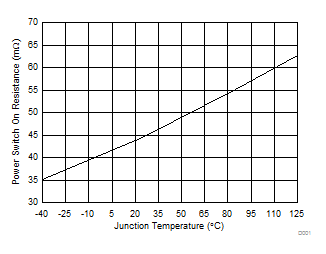
| V(IN) = 5 V |
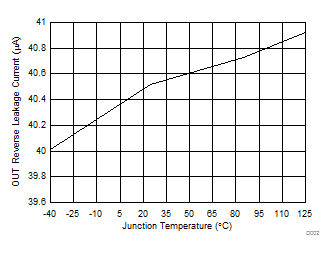
| V(OUT) = 5 V | Measure I(OUT) |
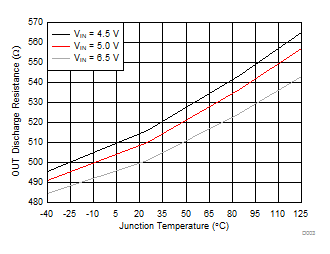
| A |
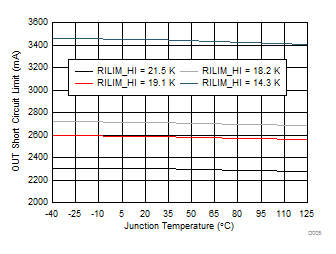
| V(IN) = 5 V |
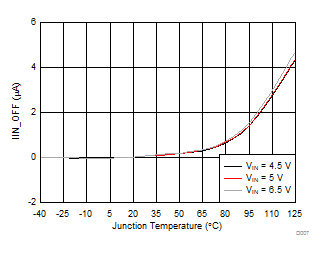
| CTL1 = 1 | CTL2 = 1 |
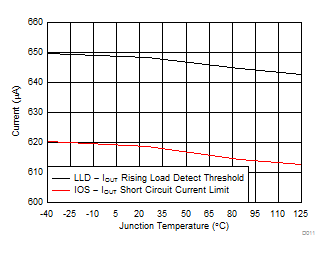
| V(IN) = 5 V | R(ILIM_LO) = 80.6 kΩ |
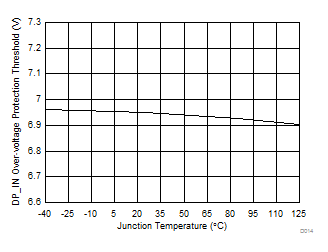
| V(IN) = 5 V |
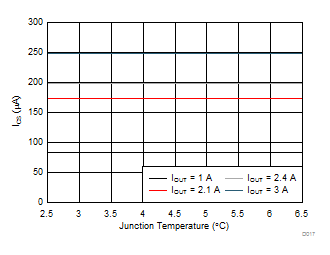
| VIN = 6.5 V |
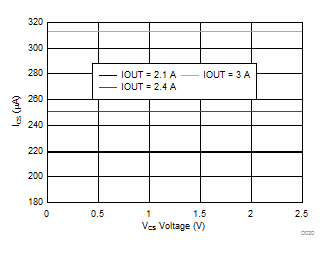
| VIN = 4.5 V |
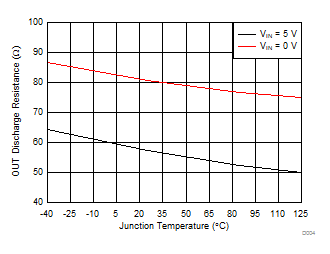
| A |
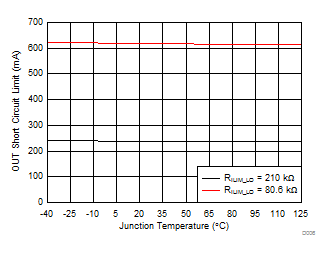
| V(IN) = 5 V |
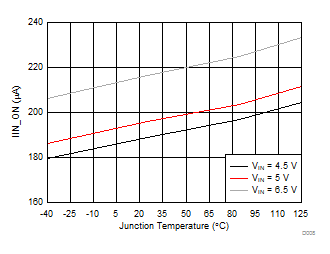
| CTL1 = 1 | CTL2 = 1 |
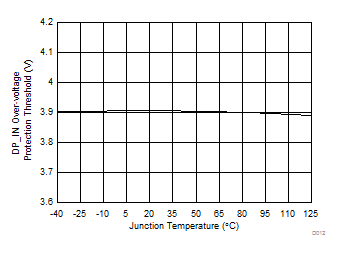
| V(IN) = 5 V |
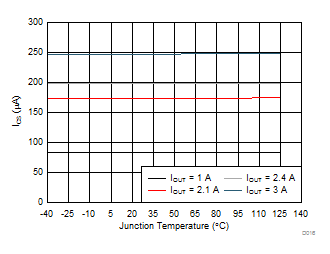
| V(IN) = 5 V | V(CS) = 25 V |
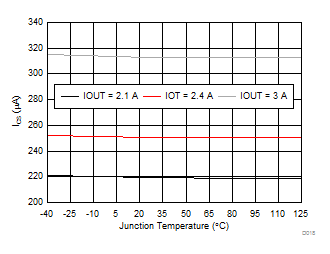
| VIN = 5 V | V(IMON) = 25 V |
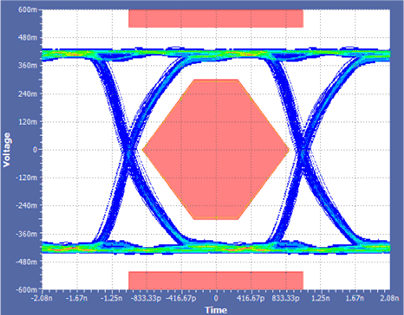
| Measured on EVM with 10-cm cable | ||
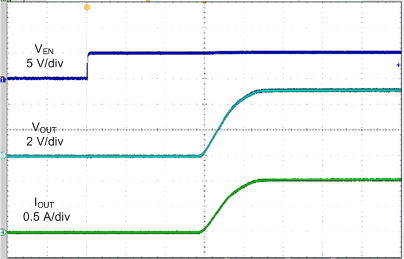
| R(LOAD) = 5 Ω | C(LOAD) = 10 µF | t = 2 ms/div |
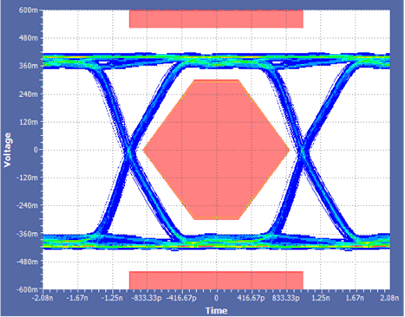
| Measured on EVM with 10-cm cable | ||
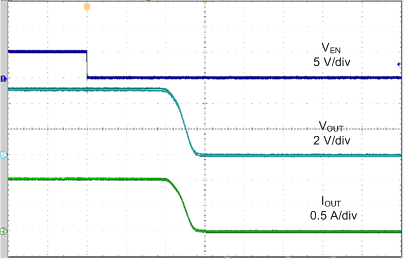
| R(LOAD) = 5 Ω | C(LOAD) = 10 µF | t = 1 ms/div |
_SLUSCO9.gif)
| R(ILIM_LO) = 80.6 kΩ | t = 4 ms/div |
_SLUSCO9.gif)
| R(ILIM_LO) = 80.6 kΩ | t = 2 ms/div |
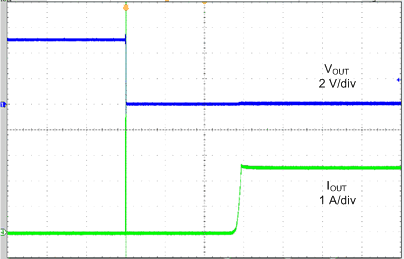
| R(ILIM_HI) = 19.1 kΩ | R(short) = 50 mΩ | t = 2 ms/div |
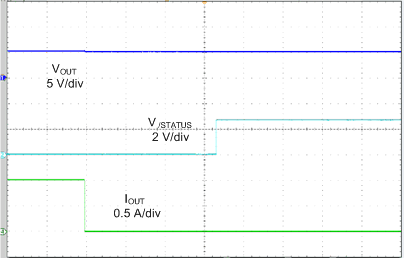
| R(ILIM_LO) = 80.6 kΩ | t = 1 s/div |
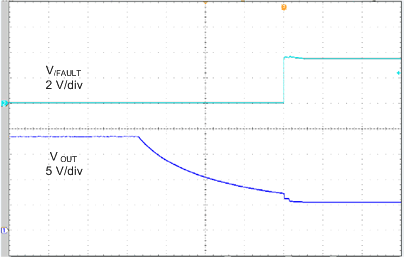
| t = 100 ms/div |
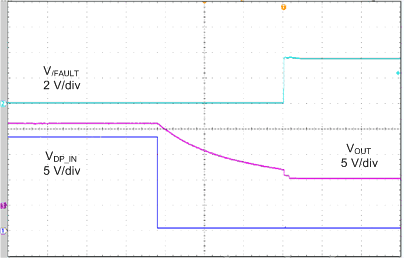
| R(BIAS) = 5.1 kΩ | t = 100 ms/div |
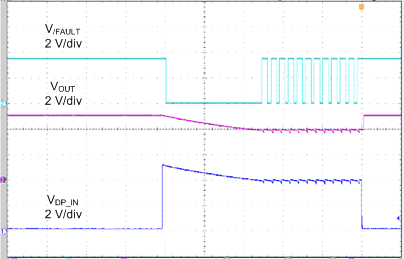
| R(BIAS) = 5.1 kΩ | t = 200 ms/div |
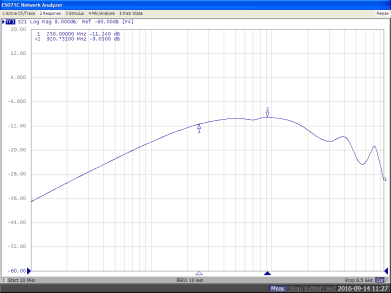
1.
Figure 34. Off-State Data-Switch Isolation vs Frequency
-TC_SLUSCO9.gif)
| R(ILIM_HI) = 19.1 kΩ | t = 4 ms/div |
_SLUSCO9.gif)
| R(ILIM_HI) = 19.1 kΩ | t = 4 ms/div |
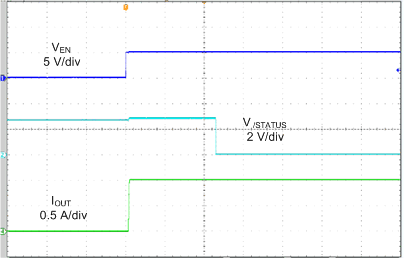
| R(ILIM_LO) = 80.6 kΩ | t = 100 ms/div |
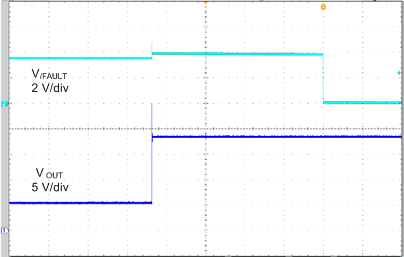
| t = 4 ms/div |
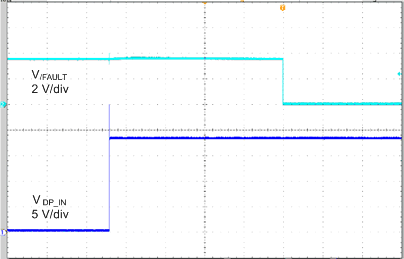
| t = 4 ms/div |
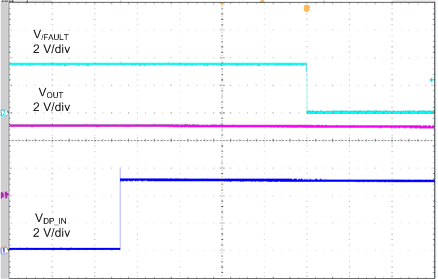
| R(BIAS) = 5.1 kΩ | t = 4 ms/div |
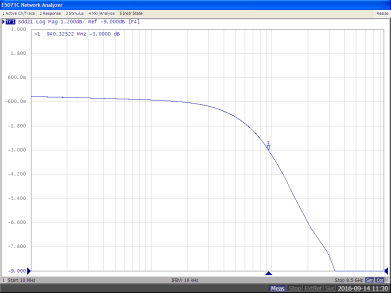
1.
Figure 33. Data Transmission Characteristics vs Frequency
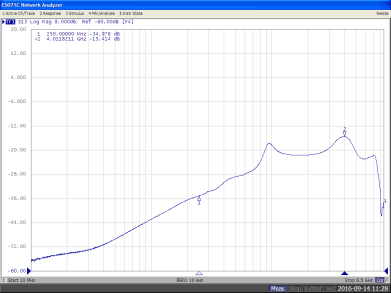
1.
Figure 35. On-State Cross-Channel Isolation vs Frequency